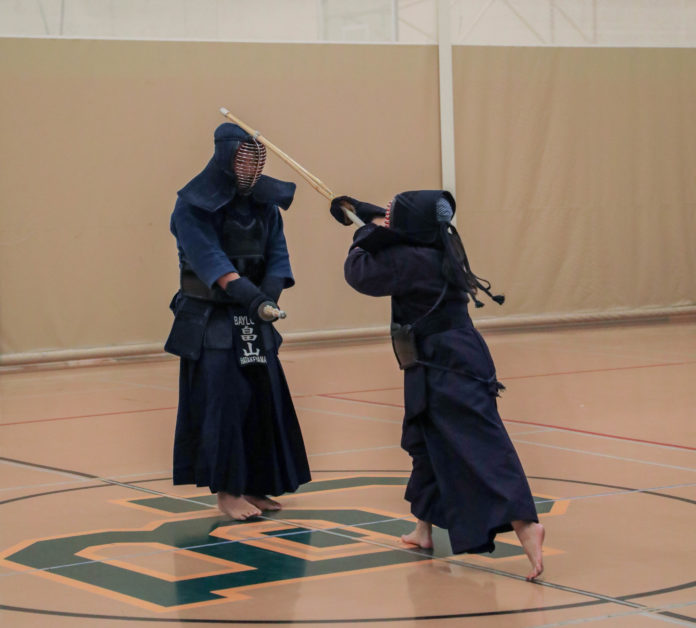
By Tyler Bui | Staff Writer
Students in the Baylor Kendo club embrace culture through their practice of Kendo, a Japanese martial art developed from traditional Japanese swordsmanship and descended from the Samurai tradition.
In Kendo, or “the way of the sword,” practitioners spar using bamboo swords (shinai), which involves technical movements and footwork. When sparring, protective armor (bōgu) is used. The practice enforces the unity between mind and body.
The Baylor Kendo Club is led by Baylor physics professor Dr. Kenichi Hatakeyama, who is a two-time national Kendo champion. He serves as Sensei for the club and provides instruction and wisdom about the sport.
The club holds practices twice a week. During practice, members learn how to defend themselves and work on different swordsmanship techniques and strikes. They are given the opportunity to spar, where they can apply different techniques and strikes against an opponent.
Houston senior Joy Hoang is the president of the Baylor Kendo Club. She joined the club during her freshman year at Baylor and has continued to practice the sport diligently.
“It’s a really fun sport and it’s a really good stress reliever for me. It pushes me to challenge myself physically and mentally,” Hoang said. “Physically, there’s a lot of cardio that goes into it and also leg and arm strength. Mentally, practices push me to think about what I’m doing. It takes a lot of focus which is something I like most about the sport.”
Godley senior Alex Angeledes, a leader of the Baylor Kendo Club, first heard about Kendo through a friend from his Japanese class at Baylor and has been a dedicated member ever since.
“My favorite part about Kendo is focusing on what I can do to improve. You have to focus on so much in this sport, so it feels good when you finally get something right,” Angeledes said. “You can just grow and continue to improve— it’s really fun to excel at.”
The club celebrates the Japanese culture that Kendo originates from and works to share the traditions and culture with members.
“We like to get together with the Japanese club because there’s a lot of intersection with interests between the two clubs. It’s a sport that’s rooted in the Japanese culture,” Hoang said. “I think it’s really different because it is very challenging and interesting in its foreignness— Kendo has a lot to offer.”
Hoang stressed the importance of respect and tradition in Kendo culture and said she has learned more than just techniques and movements.
“Before you spar with someone, there are different bowing routines to show respect to your partner,” Hoang said. “Being able to show your spirit and your readiness to engage and spar with them is really cool. You learn a lot about yourself and about the way you approach challenges and difficulties. I’ve made a lot of really great friendships through this club.”





